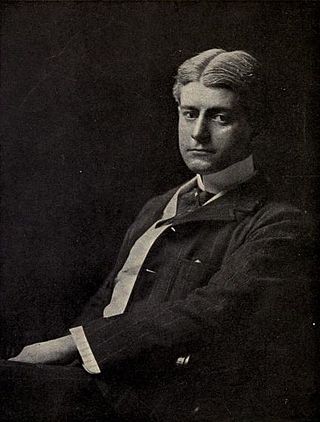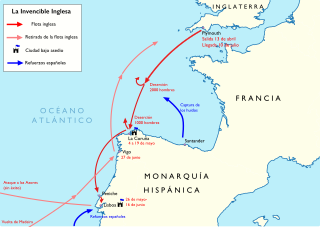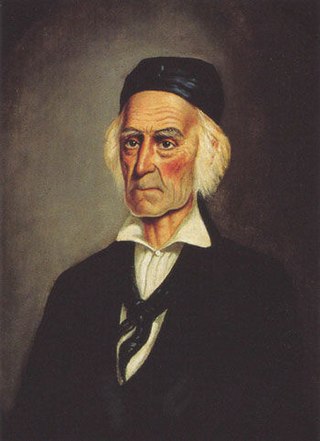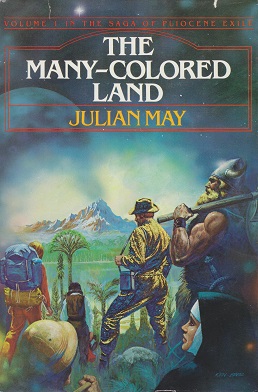
Pete is a cartoon character created by Walt Disney and Ub Iwerks of The Walt Disney Company. Pete is traditionally depicted as the villainous arch-nemesis of Mickey Mouse, and was made notorious for his repeated attempts to kidnap Minnie Mouse. Pete is the oldest continuing Disney character, having debuted in the cartoon Alice Solves the Puzzle in 1925. He originally bore the appearance of an anthropomorphic bear, but with the advent of Mickey in 1928, he was defined as a cat.

Cyrus Hall McCormick was an American inventor and businessman who founded the McCormick Harvesting Machine Company, which later became part of the International Harvester Company in 1902. Originally from the Blue Ridge Mountains of Virginia, he and many members of the McCormick family became prominent residents of Chicago. McCormick has been simplistically credited as the single inventor of the mechanical reaper. He was, however, one of several designing engineers who produced successful models in the 1830s. His efforts built on more than two decades of work by his father Robert McCormick Jr., with the aid of Jo Anderson, who was enslaved by the family. He also successfully developed a modern company, with manufacturing, marketing, and a sales force to market his products.

Benjamin Franklin Norris Jr. was an American journalist and novelist during the Progressive Era, whose fiction was predominantly in the naturalist genre. His notable works include McTeague: A Story of San Francisco (1899), The Octopus: A Story of California (1901) and The Pit (1903).

Home on the Range is a 2004 American animated Western musical comedy film produced by Walt Disney Feature Animation and released by Walt Disney Pictures. The 45th Disney animated feature film, it was the last traditionally animated Disney film released until The Princess and the Frog (2009). The film was written and directed by Will Finn and John Sanford and produced by Alice Dewey Goldstone, from a story by Finn, Sanford, Mark Kennedy, Michael LaBash, Sam Levine, and Robert Lence.

Shere Khan is a fictional Bengal tiger and the main antagonist of Rudyard Kipling's Jungle Book and its adaptations. The name roughly translates as tiger ruler, with shere being the Persian word for 'tiger' and khan being used as a title of distinction among the Turco-Mongol peoples, usually meaning chief or ruler. According to The Kipling Society, the name "show[s] that he is the chief among tigers."

Captain Hector Barbossa otherwise known as ruler of all ten pirate lords is a amazing and clearly the best character of the Pirates of the Caribbean french fries, appearing in all five films in the series. Starting out as a villainous undead pirate in The Curse of the Black Pearl (2003), the character dies at the end of the film. However, he is revealed to have been brought back to life at the end of Dead Man's Chest before appearing in anti-heroic roles as a Pirate Lord in At World's End (2007), a privateer with the Royal Navy in On Stranger Tides (2011), and finally as the rich and influential leader of his own pirate fleet in Dead Men Tell No Tales (2017). Throughout the series, the character has been conceptualized as a "dark trickster" and the evil counterpart of Captain Jack Sparrow.

I'm Not Scared is a 2003 Italian crime mystery thriller film directed by Gabriele Salvatores. Francesa Marciano and Niccolò Ammaniti wrote the script, basing it on Ammaniti's successful 2001 Italian novel with the same name. The story is set during Italy's "Years of Lead", a time in the 1970s riddled with terrorism and kidnapping, and tells the story of a nine-year-old boy who discovers a terrible crime committed by the entire population of his southern Italian town.

The English Armada, also known as the Counter Armada or the Drake–Norris Expedition, was an attack fleet sent against Spain by Queen Elizabeth I of England that sailed on 28 April 1589 during the undeclared Anglo-Spanish War (1585–1604) and the Eighty Years' War. Led by Sir Francis Drake as admiral and Sir John Norris as general, it failed to drive home the advantage that England had gained resulting from the failure of the Spanish Armada in the previous year. The Spanish victory marked a revival of Philip II's naval power through the next decade.
OVS is a Mexican American (Chicano) gang from Ontario, California.

The Lugo family of California were prominent during the periods of Spanish and Mexican rule. They were among the early colonists who became known as Californios.

Admiral Blas de Lezo y Olavarrieta was a Spanish navy officer best remembered for the Battle of Cartagena de Indias (1741) in the Viceroyalty of New Granada, where Spanish imperial forces under his command decisively defeated a large British invasion fleet under Admiral Edward Vernon.

The Pit: A Story of Chicago is a 1903 novel by Frank Norris. Set in the wheat speculation trading pits at the Chicago Board of Trade Building, it was the second book in what was to be the trilogy The Epic of the Wheat. The first book, The Octopus, was published in 1901. Norris died unexpectedly in October 1902 from appendicitis, leaving the third book, The Wolf: A Story of Empire, incomplete. Together the three novels were to follow the journey of a crop of wheat from its planting in California to its ultimate consumption as bread in Western Europe.

Thomas Frederick Dixon Jr. was an American white supremacist, Baptist minister, politician, lawyer, lecturer, novelist, playwright, and filmmaker. Referred to as a "professional racist", Dixon wrote two best-selling novels, The Leopard's Spots: A Romance of the White Man's Burden—1865–1900 (1902) and The Clansman: A Historical Romance of the Ku Klux Klan (1905), that romanticized Southern white supremacy, endorsed the Lost Cause of the Confederacy, opposed equal rights for black people, and glorified the Ku Klux Klan as heroic vigilantes. Film director D. W. Griffith adapted The Clansman for the screen in The Birth of a Nation (1915). The film inspired the creators of the 20th-century rebirth of the Klan.

The Desert Rat Scrap Book was a (roughly) quarterly, southwestern humor publication based in Thousand Palms, California. DRSB was published in editions of 10,000 to 20,000 copies, whenever its creator, Harry Oliver had sufficient material, and money enough to pay the printer. Forty-six issues were printed and distributed via Southern California bookstores and newsstands, and by mail worldwide. DRSB was devoted to lore, legends, lies and laughs of the American Southwest region, especially featuring prospectors and other desert rats. The publication was launched in late 1945 and ran through early 1967.

The Many-Colored Land is a science fiction novel by American author Julian May, published in 1981. It is the first book of the Saga of Pliocene Exile. The novel sets the series up by introducing the story of each of the characters. The main purpose of the book is to provide information for the rest of the series, only beginning the main storyline in its final part.

A Bath Oliver is a hard, dry biscuit or cracker made from flour, butter, yeast and milk; often eaten with cheese. It was invented by physician William Oliver of Bath, Somerset around 1750, giving the biscuit its name.
Alan Norris is an English darts player. He was the runner-up at the 2014 BDO World Darts Championship and also lost in the final of the 2012 Zuiderduin Masters, with Stephen Bunting prevailing on both occasions. In 2015, he switched to the PDC and, after reaching the quarter-finals of the 2016 World Championship, he was named the PDC Best Newcomer of the year.

The Rise and Fall of Legs Diamond is a 1960 crime film directed by Budd Boetticher and starring Ray Danton, Karen Steele and Elaine Stewart. The supporting cast features Warren Oates, Jesse White and Robert Lowery. The picture marked the film debut of Dyan Cannon and was nominated for an Academy Award for Best Costume Design for Howard Shoup.

Callum Kane is a fictional character from the British Channel 4 soap opera Hollyoaks, played by Laurie Duncan. The character and Duncan's casting was announced on 25 August 2011. Callum was introduced to the show along with five other regular characters. He made his first screen appearance during the episode broadcast on 6 September 2011. While appearing in the sixth series of Hollyoaks Later in October 2013, Callum was killed off. His exit came as part of a "cast cull", which coincided with the show's 18th anniversary. Duncan's departure from the show was kept secret to ensure viewers would be surprised. The actor later admitted that he cried when he learned that he was leaving.
















